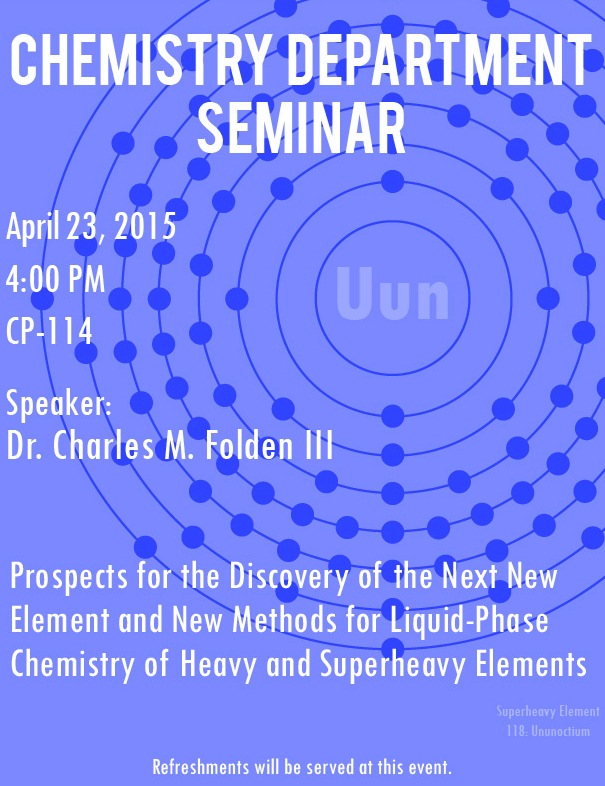----------
This event was originally scheduled on February 20, 2015 but was rescheduled due to weather.
Dr. Charles M. Folden III will be presenting a seminar titled Prospects for the Discovery of the Next New Element and New Methods for Liquid-Phase Chemistry of Heavy and Superheavy Elements.
Abstract: Experiments in recent years have produced new spherical, shell-stabilized superheavy elements through Z = 118 in complete fusion neutron-evaporation reactions using projectiles of 48Ca reacting with actinide targets. Unfortunately, projectiles with higher atomic numbers will be required for the discovery of heavier elements due to a lack of available target materials. Recent experiments in my group at Texas A&M University have studied the effect of varying the projectile in so-called analog reactions, which also produce spherical, shell-stabilized nuclei, but with much larger cross sections. The data show a substantial reduction in cross section when other projectiles are used compared to the reactions of 48Ca with the same targets. A simple theoretical model has been developed which suggests that the probability of compound nucleus formation and the survival of compound nuclei are both negatively affected by the change from 48Ca. In these reactions, significant collective effects decrease the probability that the excited nucleus will “survive” against fission and defy the assumption that strong shell-stabilization will increase the cross section. These results suggest that the production of new spherical, shell-stabilized superheavy elements with Z > 118 could be very difficult.
Faculty Host: Dr. Steven Yates

